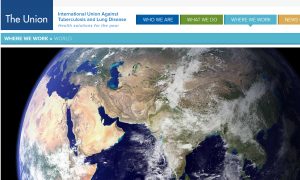 A new position paper on heat-not-burn (HnB) products from the International Union Against Tuberculosis and Lung Disease suggests that advertising and indoor use should be banned while governments await independent science.
A new position paper on heat-not-burn (HnB) products from the International Union Against Tuberculosis and Lung Disease suggests that advertising and indoor use should be banned while governments await independent science.
The Union, a global medical education and research organisation which focuses on low- and middle-income countries, says that “the current published literature on the health impact of HnB tobacco products is dominated by industry-sponsored research that unequivocally concludes that HnB tobacco products pose a lower risk than cigarettes”.
Therefore, it recommends, governments should “apply the precautionary principle to the regulation of HnB tobacco products. Countries should wait for independent assessment of the health effects of HnB tobacco products and not simply take industry assertions at face value.”
Among specific policy measures, it urges that “advertising, promotion, and sponsorship activities of HnB tobacco products should be banned”, as should indoor use, because “HnB tobacco products still pollute the air around people using the products, creating second-hand exposure”.
What This Means: That The Union puts little trust in HnB is clear from its opening paragraph, where it states that both combustibles and electronic nicotine delivery systems (ENDS) “were introduced and promoted to maintain [tobacco] industry profits”, a comment whose stunning obviousness is paralleled only by its air of dismissive disdain.
However, though The Union’s argument is shaped by preconceptions, it should not be disregarded.
That most research on the new HnB category comes (so far) from the manufacturers was always going to be a problem. Even if the science itself is impeccable, the mere appearance of partiality could rebound on HnB’s reputation among regulators and health professionals, as this paper shows it is already doing.
It’s worth observing that another recent report on HnB and health risks, from the UK’s Committee on Toxicity, was much more sanguine about passive exposure and indeed less alarmist in general, but also raised the issue of research. This nagging doubt is unlikely to go away until independent work starts to appear in volume.
– Barnaby Page ECigIntelligence staff






